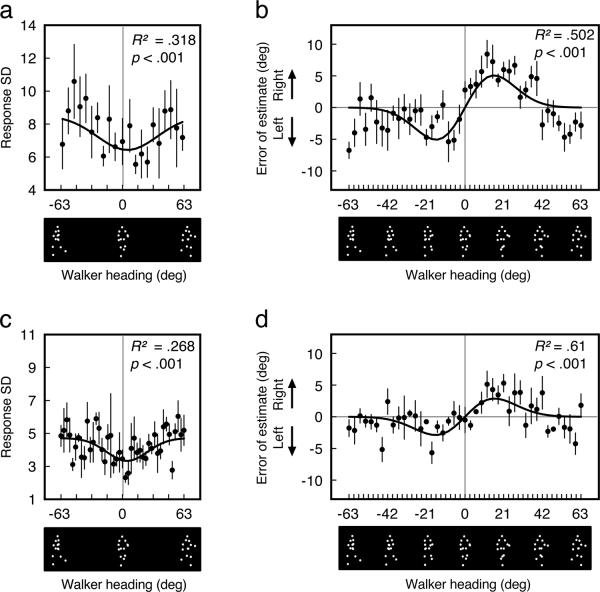Fig. 2.
Reference repulsion for perception of a single walker (a) Observers were most sensitive to the heading of a briefly presented approaching walker. Response variability decreased for headings near the category boundary, as shown by a good fit from a Gaussian function to the average of all observers. (b) A briefly presented walker's heading was perceived as exaggerated around the leftward-rightward category boundary (0°). The average difference between the perceived and actual heading is shown for each walker heading (with negative values indicating a leftward error and positive values indicating a rightward error). The data (filled circles) were well fit by the derivative of a Gaussian (black line), which characterized the highly ordered tuning of the exaggerations near the category boundary. (c) When a walker was presented for a longer duration, observers were still most sensitive to the headings of approaching crowds although the heading sensitivity effect was reduced. (d) Reference repulsion still occurred for perception of a walker shown for a long duration, albeit of a smaller amplitude. Error bars represent ±1 SEM.

